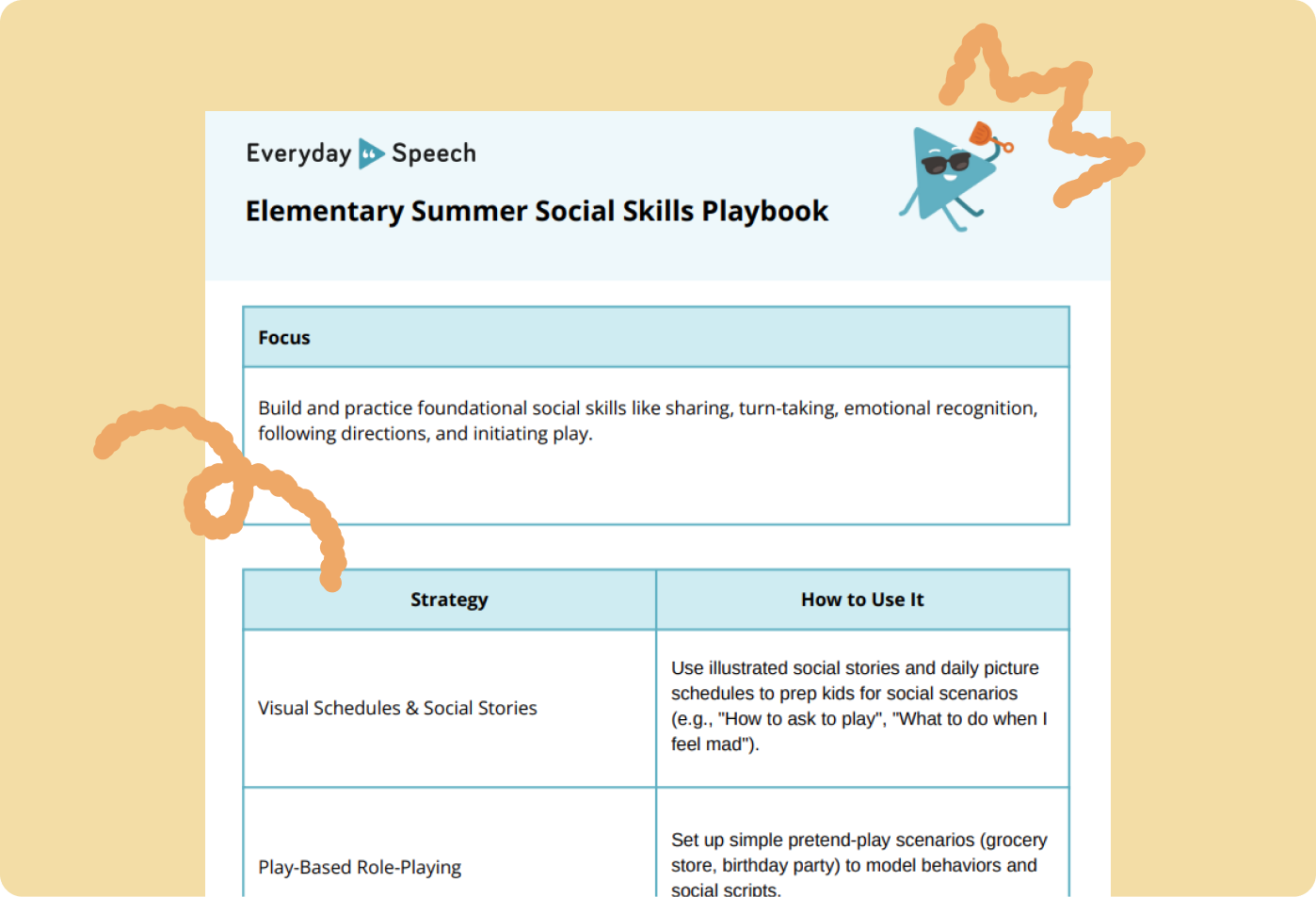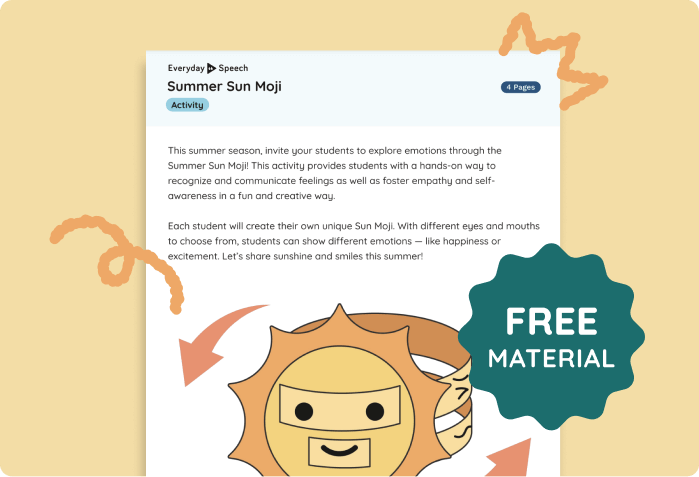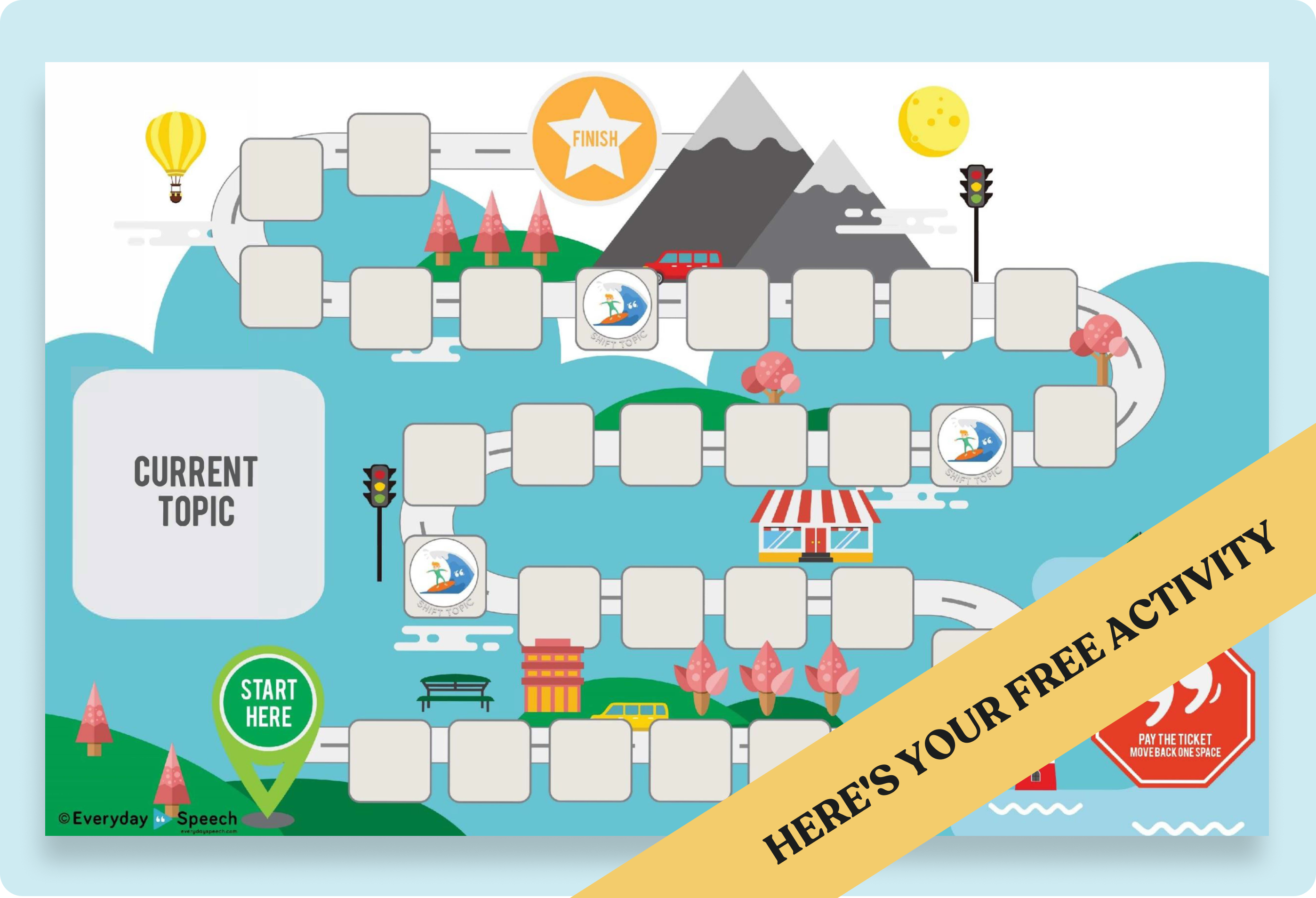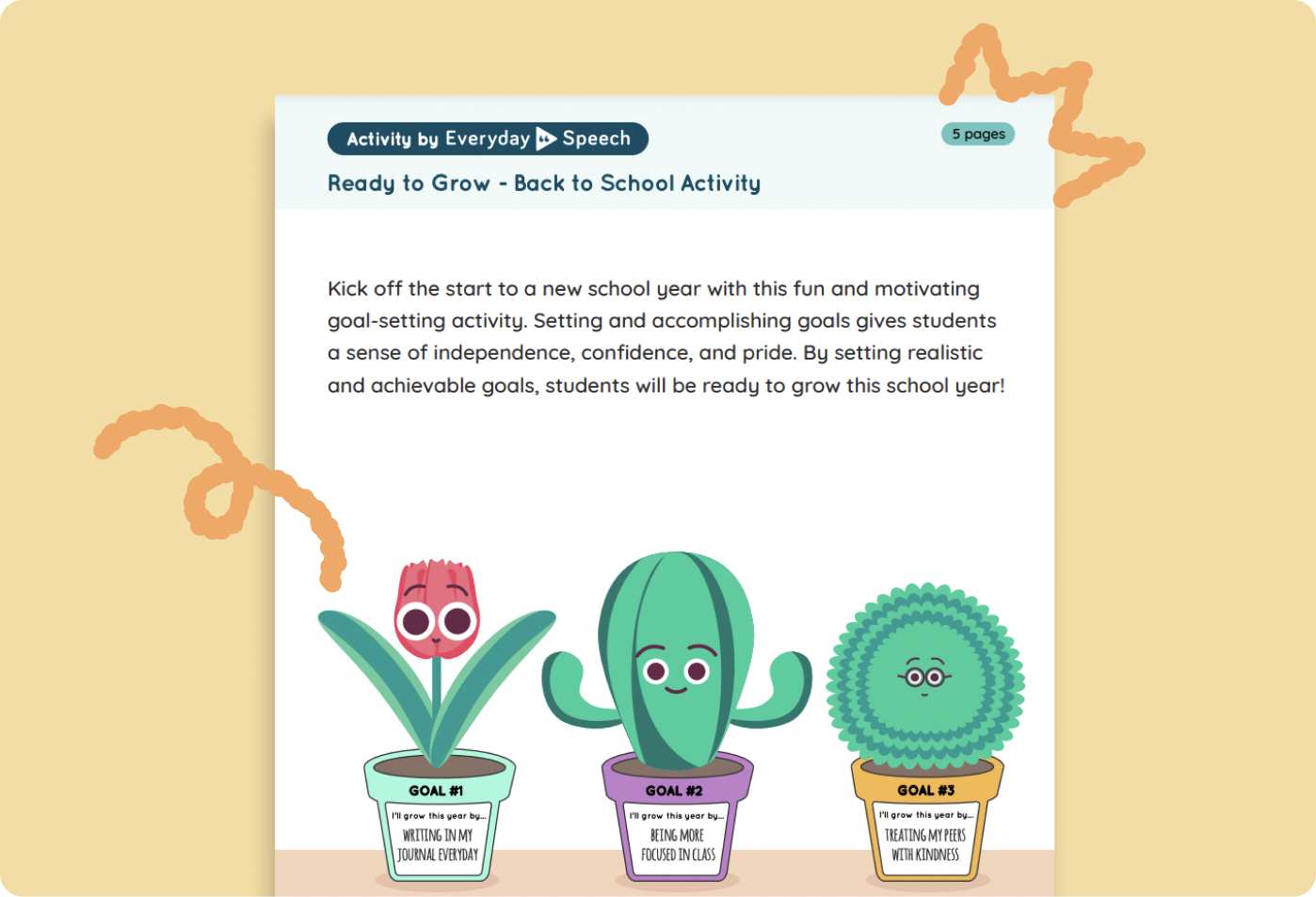How to Prevent the Summer Slide (Free Materials for PK-12)
Get free social skills materials every week
No-prep lessons on self-regulation, emotional recognition, conversation skills, and more.
Sign up hereWhen school ends for the year, social learning often pauses. Without structured routines, peer interaction, and adult support, many students begin to lose the communication and self-regulation skills they worked hard to build. This regression—often called the summer slide—can be especially concerning for students with IEPs or social skills goals.
But supporting social skill retention doesn’t require hours of direct instruction. It requires consistency, simple routines, and familiar tools. Whether students are home with caregivers, attending summer camp, or enrolled in an extended school year program, there are realistic ways to keep them engaged and growing.
This article outlines key strategies to prepare students for summer and help prevent social regression—along with free, ready-to-use resources that reinforce those skills in everyday life.
What Is the Summer Slide?
The summer slide refers to the regression of skills that can occur when students are out of school for an extended period. While academic losses are often discussed, social and behavioral regression is just as important—especially for students who receive services to support their communication, peer interaction, or emotional regulation.
Research shows that students can lose several months of learning during summer break. For those working on foundational social skills, that loss can feel even greater. Without daily routines, opportunities for peer interaction, and access to strategies that support self-regulation, students may struggle to retain what they’ve gained over the year.
Caregivers and educators often notice the difference in the fall. Students who were making progress with conversation skills, problem-solving, or emotional awareness may show signs of increased frustration, withdrawal, or dysregulation when school resumes.
But this regression is not inevitable. With a few intentional supports, many students can maintain their skills and return to school feeling confident, connected, and ready to grow.
How to Prepare for Summer
The most effective summer plans begin before the school year ends. As the year winds down, teams can begin preparing students and families for a successful transition into summer routines.
Here are a few ways to prepare:
- Share what worked: Provide families or summer teams with tools that helped students succeed. This might include specific visuals, behavior supports, communication aids, or strategies for self-regulation.
- Involve students in reflection: Ask students to think about what helped them most during the year. Reflecting on their own growth builds ownership and helps generalize skills. Prompt students to name strategies they used successfully and imagine where they might use them over the summer.
- Preview changes: Many students benefit from talking about what will be different during the summer. Help them anticipate where they will be, who they’ll be with, and what routines will look like. Use visuals or role-play to reinforce the discussion.
- Set realistic expectations: Summer is a break, and that matters. It is not a time to push new learning goals. The goal is maintenance. Focus on helping students stay connected to the skills they’ve already built, in settings that feel relaxed and familiar.
Strategies to Avoid Social Skills Regression
Maintaining social skills over the summer is less about formal lessons and more about reinforcing growth in everyday moments. The most effective strategies are the ones that feel natural and easy to repeat.
Here are some approaches that support that kind of practice:
Encourage Real-World Practice
Help families and summer staff find moments in daily life that involve communication and interaction. This might include:
- Asking for help at a grocery store
- Taking turns during board games
- Using problem-solving strategies during group play
- Greeting peers at the park or pool
Social skills should not be isolated to classroom settings. Practicing them in real-world spaces helps students retain and apply what they’ve learned.
Reinforce Emotion Identification
Students often need daily practice to maintain emotional vocabulary and regulation strategies. Use short conversations or visual prompts to check in on feelings. Pair discussions about emotions with calming strategies that students already know, such as breathing exercises, movement breaks, or asking for space.
Caregivers can also use storybooks, crafts, or pretend play to reinforce emotional learning.
Model Conversation and Social Scripts
Over the summer, some students lose access to modeled social behavior. That modeling can come from adults or peers. Encourage families to create opportunities for students to hear and practice conversations, even in simple contexts. Scripts can be used to guide students through peer interactions, conflict resolution, or requesting a break.
Reinforcing these scripts helps students avoid frustration when they face social challenges.
Embed Practice Into Unstructured Time
Playtime, outdoor activities, and even chores are chances to practice social skills. Use:
- Cooking to work on sequencing, cooperation, and language
- Arts and crafts to encourage shared attention and flexible thinking
- Playdates or family gatherings to practice group participation
By embedding skills into daily routines, students are more likely to retain them without needing direct instruction.
Offer Clear Tools and Visuals
Visual schedules, behavior charts, and social narratives remain helpful over the summer. Even older students can benefit from reminder checklists, goal trackers, or journal prompts that build reflection and ownership.
The key is to make these tools easy to use. When possible, send them home or make them accessible digitally before the school year ends.
Free Summer Resources for Social Skills Practice
Each of the following resources is designed to support a specific skill area and includes guidance on how to use it during the summer months. These can be shared with caregivers, used in therapy sessions, or integrated into extended school-year programming.
Summer Social Skills Playbook
Skill Focus: At-home practice, caregiver support
How to use it: Send this guide home with students at the end of the year or include it in ESY onboarding. The playbook offers clear routines and activity prompts across skill areas such as conversation, emotional regulation, and group interaction.
It includes both elementary and secondary versions, making it easy to adapt across age groups. Recommend that families pick one strategy to try each week and use the included checklists or prompts to make it visible and actionable.
Summer Sun Moji Craft
Skill Focus: Emotion recognition, self-expression
How to use it: Cut out and assemble the sun face with interchangeable eyes and mouths. Use it as a daily check-in activity to help students name how they’re feeling. This craft can also support peer discussion: have students create and share their Sun Mojis with others, then talk about times they’ve experienced those feelings.
This tool builds emotional vocabulary and supports early identification of mood shifts that might otherwise lead to dysregulation.
Social GPS – Community Behaviors Packet
Skill Focus: Conversation skills, navigating community settings
How to use it: Print and assemble the board game to help students practice staying on topic, asking questions, and responding in real time. Each card prompts a WH-question, comment, or social cue, making it a great fit for small groups or summer school sessions.
Caregivers can also use it as a family game to model social interactions in preparation for real-world outings like going to the store, visiting the library, or meeting new peers.
Video Modeling: Joining Others on the Playground
Skill Focus: Social initiation, joining peer activities
How to use it:
Play the video before unstructured settings like recess, summer camp, or backyard playdates. Pause to discuss what the student notices about the peer interactions and body language.
Reinforce phrases like “Can I play too?” and practice role-playing before the real scenario occurs. This is ideal for students who struggle with initiating peer contact or reading group dynamics.
Ready to Grow – Back to School Activity
Skill Focus: Goal-setting, expressive communication
How to use it: Use this printable craft during the last weeks of school or the first week of a summer program. Have students reflect on ways they want to grow in the new school year. You can tie this to behavioral, academic, or peer goals.
Once complete, display the flowers as a bulletin board or have students share their goals in small groups. This is a great tool for re-engaging students after a summer break while reinforcing motivation and forward-thinking.
Maintaining Momentum Into Fall
Social skills are not just learned—they’re practiced. When that practice stops for two or three months, students often return in the fall less confident, less consistent, and more prone to social challenges that interrupt learning.
By preparing students and caregivers before summer begins—and equipping them with clear, accessible tools—you make it easier to sustain the gains made during the year. The five resources above are designed to support that continuity. Each one helps reinforce core skills like emotional regulation, peer interaction, and social problem-solving without requiring a formal classroom or daily therapy.
Summer routines will always look different. But with a few simple routines, students can maintain the progress they’ve earned—and enter the new year ready to keep growing.




